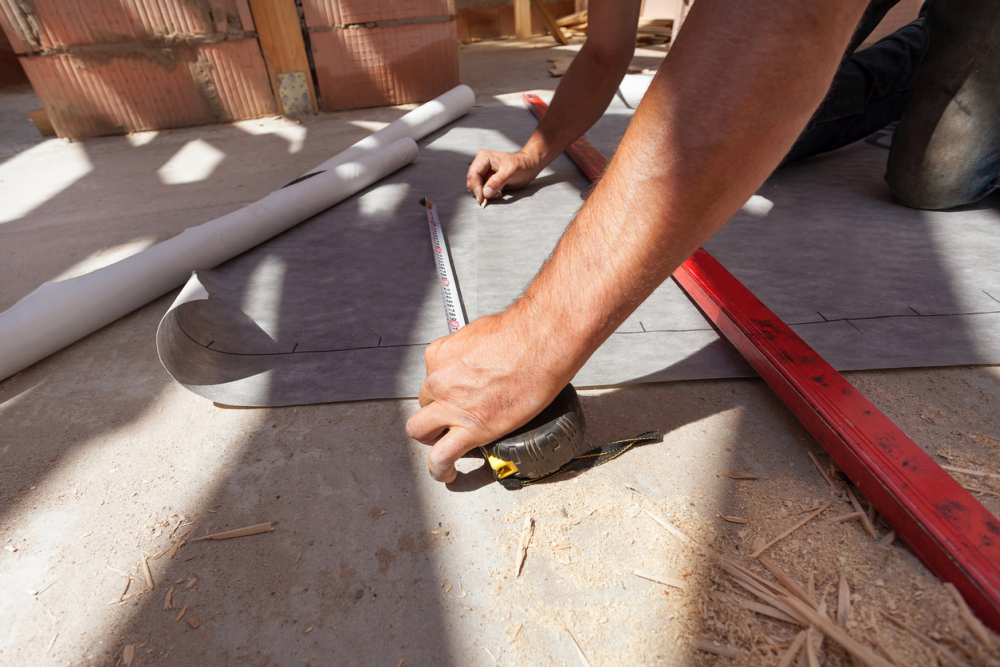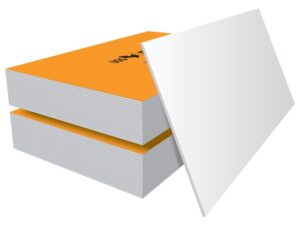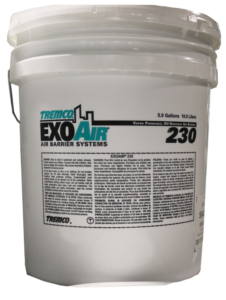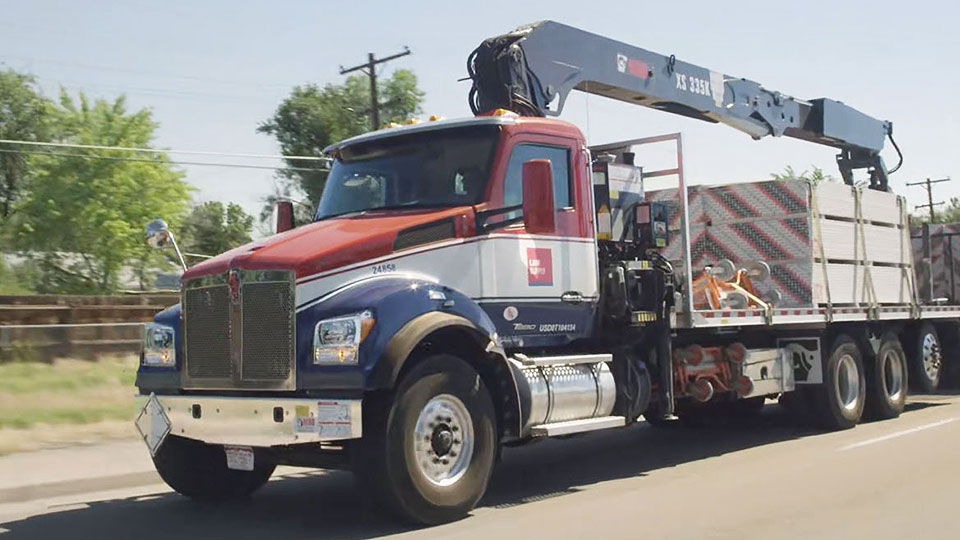
Weather Resistant Barriers: The Different Kinds and How they Affect Performance
Unwrapping the Exterior: How WRBs Affect Building Performance
When it comes to keeping your home or business protected from the elements winter, the choice of materials in your wall system can make a big difference towards the performance of your overall assembly. Depending on what products you choose to incorporate into your wall assembly, it can go a long way towards how much it can cost to keep heat inside your building and moisture/condensation out.
Weather Resistant Barriers – or WRB’s – are designed to protect a building from the elements, preventing liquid water from entering a wall system while allowing water vapor to escape. Without a strong building envelope, a structure will not be properly shielded from the elements, thus allowing air and water to pass through the walls.
As the demand for more energy efficient buildings has increased, the performance of WRBs has become more important than ever before. Here are a number of important details to keep in mind when evaluating what kind of Weather Resistant Barrier you may need for your next project:
Background
Generally referred to as house wrap or the weather barrier, WRB’s make up just one component of a wall system that is generally comprised of the following elements:
- Siding / Cladding
- Windows / Doors
- Flashing (Exposed and Embedded)
- Water-Resistant Barriers (WRB)
Building wrap serves a key role in the overall strength of a wall system, but cannot work in isolation. It is important that building wrap is considered along with the rest of the products in your assembly in order to guarantee that your project is successful.
Four Control Layers
Wall assemblies are designed to control four major elements from passing in and out of a building, with WRBs primarily responsible for preventing water from entering the structure. These four control layers are:
-
Water
-
Air
-
Vapor
-
Temperature
While exteriors are generally designed to keep water and air out entirely, vapor permeability in a wall system is a more nuanced process. An effective wall system must allow a certain amount of vapor to pass in and out of a wall system in order to properly control humidity and temperature. This permeability is expressed in perms – the lower the number, the less easily water vapor can pass through a material.
Examples of vapor-impermeable materials include glass and polyethylene sheeting, and these materials have a perm rating around zero. Vapor-permeable materials, like the majority of WRBs, have a perm rating greater than 10. The strategy around vapor permeability can differ significantly depending on climate and seasonality.
In addition to the perm rating, there are a number of other considerations to take into account when deciding on a WRB. These considerations include cost, ease-of-installation, exposure rating, as well as the overall water management strategy in your wall assembly. Let’s take a look at the different major categories of weather-resistant barrier products while evaluating some of these considerations:
Different Types of WRBs:
Housewrap
- Standard weather barrier and the most popular product type on the market
- Shingle-style lapping
- Prevents water from entering assembly, but doesn’t protect against air by default
- Commercial-grade paper, properly taped and wrapped, can serve as Air Barrier also.
- Cost: The most affordable category
- Installation: The success of your WRB can vary significantly depending on whether or not the product is properly installed. Fasteners have the potential to poke holes in a barrier if the installer is not careful
Drainable Housewrap
- Designed with wrinkles, grooves, and spacers to keep siding from trapping water
- Shingle-style lapping, allowing water to drain through the system effectively
- Cost: Slightly more than standard housewrap
- Installation: Straightforward integration with flashings

Securock ExoAir 430 Panel
Integrated Panels
- Sheathing, air, and water barrier combined into one integrated material
- Designed to provide strong air sealing in addition to water
- Cost: More expensive than standard housewrap A lot more expensive and combine ci and possible structural element for wall if talking same lingo.
- Installation: Reliance on tape to install
- Example: Securock® ExoAir® 430 System: From USG and Tremco, an integrated gypsum panel with a WRB integrated into it. It controls air, water, and vapor throughout the building envelope.

Tremco Exoair 230
Fluid-Applied Membrane
- Sprayed or rolled into a substrate, also can be troweled
- Available in different permeances
- Water and air barrier – Structural
- Cost: A premium product Thin mil or thick mil
- Installation: By combining the substrate and AMB into one installation, it can save time. However, some products must be installed by professional contractors.
- Example: Tremco EXOAIR 230 – Air barrier membrane product that can be rolled or sprayed on to exterior-above grave assemblies. Typically applied to exterior sheathing panels, concrete block, or wood substrates. Thick mil and have low temp 25 degrees
Self-Adhered Sheet
- Good option for air sealing in addition to water. Now have permeable peel n stick coming out
- Peel-and-stick style installation
- Shingle-style lapping
- Cost: A premium product
- Installation: Quick installation
Rigid Foam
- Not all products are approved for WRB use
- Specific flashing details
- Some shrinkage concerns
- Cost: More expensive than standard housewrap
- Installation: Must follow manufacturers’ installation instructions, involves taped seams
Insights
Weather Resistant Barriers can be either mechanically attached, self-adhered (peel and stick), or fluid applied. Among these major categories, mechanically-attached housewrap is the most widely used and most popular type, accounting for nearly 2/3 of all WRBs installed across the country.* Self-adhering and integrated panels are growing in popularity, while fluid-applied products are also starting to catch on. For the most part, alternatives to traditional housewrap can be found in multifamily buildings and newer homes.
In order to determine the product that is right for your next project, it is important to weigh all of the considerations we have laid out here as well and consult the advice of an expert. Beyond just the cost and ease-of-installation, it is important to factor in the product’s exposure rating, your siding material, manufacturer warranties, as well as controls beyond water.
This can be a lot to keep track of, particularly if you are unfamiliar with the product landscape, which is where expert advice can make a big difference. Partnering with a knowledgeable distributor with strong customer relationships is a great way to help ensure that you are getting the best value out of your weather resistant barriers and the overall wall assembly.
Looking for more info?
L&W Supply’s product experts can help you track down the materials you need and have them delivered safely, where and when you need them. To read more about our available Exteriors products, contact one of our branches, or learn more about weather-resistant barriers, follow the links below.
The Year Ahead in Residential Housewrap
*Source: Home Innovations Research Labs

ABC Supply Co., Inc. Announces 2025 Managing Partners
ABC Supply has announced its 2025 managing partner inductees. This year’s Managing Partner Program welcomes a total of 47 branch managers – including 12 from L&W Supply – all honored for their exceptional leadership and contributions. Read more about this distinction and view the full list of 2025 Managing Partners in ABC Supply’s full announcement […]

L&W Supply Acquires Drywall Supply
This acquisition strengthens the company’s presence and support for contractors in Kansas BELOIT, Wis. – February 24, 2025 – L&W Supply, a nationwide distributor of interior building materials and construction supplies, has acquired the assets of Drywall Supply, a prominent player in the gypsum specialty dealer space, located in Wichita, Kansas. With this acquisition, L&W […]